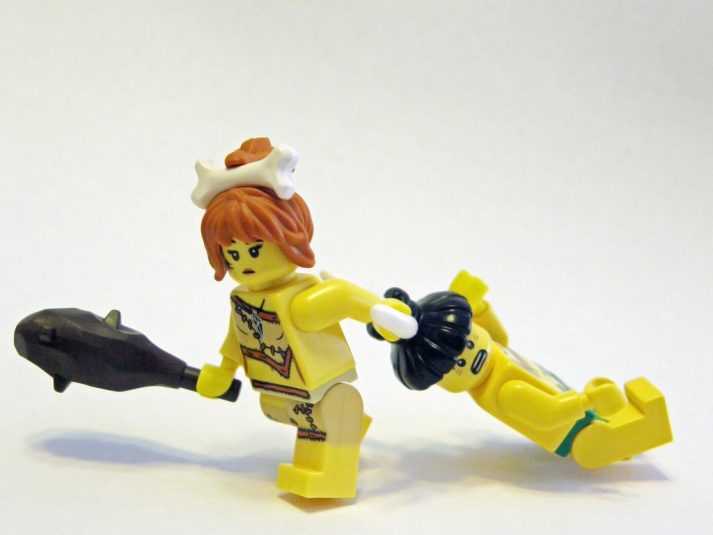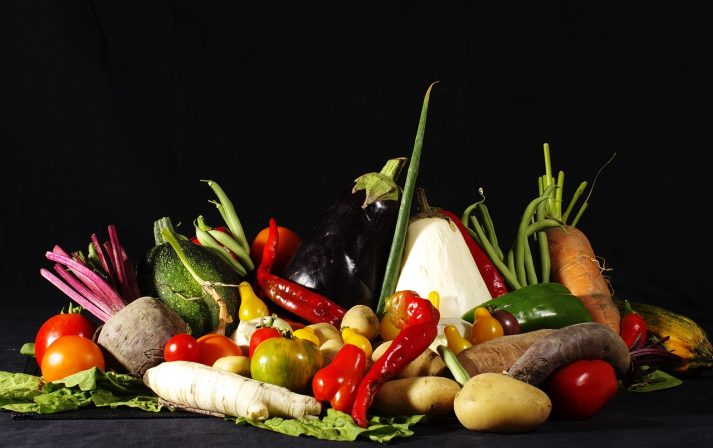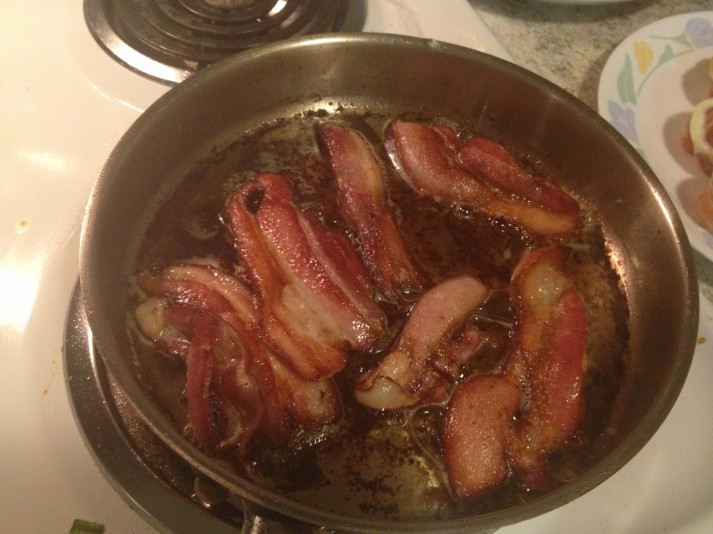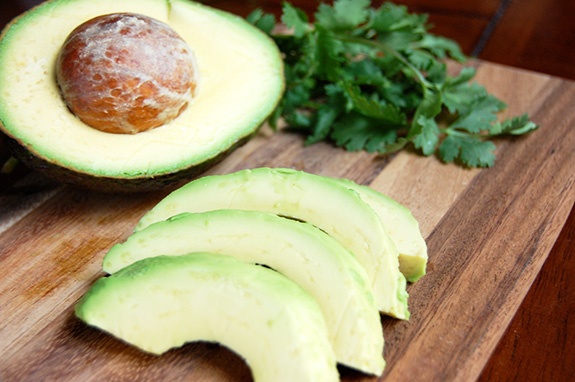This
post was originally published on
this siteOriginally posted at: http://www.nerdfitness.com/
“You won’t believe #4!”
No, I’m totally messing with you, hahahaha. But there are 5 things I wanted to get straight in regards to the internet’s favorite (or favorite to bash) diet.
The Paleo Diet has taken the nutritional world by storm over the past few years, and there’s a lot of misinformation and outlandish claims being tossed around about it, both for and against.
Speaking of which, did you know the Paleo Diet actually cures, err, I mean causes all diseases?
Being the nice guy that I am, I figured I’d take today to set the record straight on a diet that has changed many lives and earned itself a steady stream of critics and detractors along the way.
Our “Beginner’s Guide to the Paleo Diet” has been viewed 10 million times by now, and we’ve received thousands of emails with questions, comments, concerns, hopes, dreams, and success stories with regards to this crazy, not-so-crazy way of eating. If you haven’t read our ultimate guide, check it out, and then come back and catch these five things you should know about the Paleo Diet.
1. Nobody really knows or should care what a caveman ate.

There are a lot of pseudo-science and arm-chair anthropologists out there running around telling us what early cavemen ate back in the day.
Based on cave drawings, fossilized remains, and conjecture from scientists and anthropologists, we have a decent idea of what Fred and Wilma Flintstone ate. However, we haven’t invented a time machine yet, and we honestly can’t say with 100% certainty what these hunter-gatherer types consumed tens of thousands of years ago.
We can safely assume they ate animals and whatever plants/fruits/nuts/seeds they could find, as domesticated farming hadn’t happened yet, and Cap’n Crunch and SpaghettiOs didn’t grow on trees.
So when you hear that the Paleo Diet tells us to “eat like a caveman ate,” that’s not supposed to be taken as 100% religious gospel or iron-clad fact. Instead, it’s intended to be a mental model to help us easily make food decisions without consulting a book, adding up points, counting calories, or tracking macros.
Since we can’t (and wouldn’t want to) eat exactly like them, the Paleo Diet refers to eating what you THINK a Caveman would have consumed.
When you are deciding what to buy at the supermarket or order while out on a business dinner, you can condense all the nutritional information you need to make an informed decision by remembering the basic Paleo Diet philosophy:
- Vegetables
- Meat, fish, eggs
- Fruits
- Some nuts, seeds, certain oils
- More vegetables
- Skip most everything else, and definitely the processed stuff
No counting calories or charts required. Eat the above listed things and skip everything else, and you’ll get 80% of the way there.
“But did some cavemen eat wheat, and what kind of rice? Pandemonium!”
It doesn’t f***ing matter! Eat less processed crap, more whole foods, and start following a method of eating that can actually help you succeed!
2. Don’t actually treat it like a diet!

I hate the word “diet.” Almost as much as I hate the word “toned.” These words are like nails on a chalkboard for me, because they imply something that isn’t true!
When we say we’re ‘going on a diet’ it usually means “making some temporary changes to achieve a certain result before returning to normalcy.” You know what I mean. You do something until you get that bikini body you want, or so you lose a few pounds before your wedding, and then you can go back to normal.
Going on a that type of diet is a waste of time and energy in the long run. The Paleo Diet, when done properly, isn’t actually a diet.
It’s a permanent nutritional strategy and a “way of life.” I hate saying “way of life” too, because that makes me sound like a fad-chasing nerfherder, but bear with me.
The Paleo Diet is a strategy for making food decisions you keep with you – informed decisions as a result of how you live, forever.
Yes, there are things like Whole 30 where you go all in on a strict Paleo Diet lifestyle for 30 days. I have no problem with Whole 30 – team NF member Lauren and her wife just did it for 30 days and had tremendous success. After their 30 days were up, however, they identified permanent healthy changes they could make to their lifestyle, and stuck with it.
Now, compare this to what most people do on a diet: drastically change everything they eat for a certain amount of time, and then go back to the way things were (and usually gain everything back).
This is also why you’re doomed to stay fat unless you change your strategy, permanently.
3. You can totally do it wrong

“Never count calories and eat as much as you want!” these are often the two parts of the Paleo Diet that draw people in. We humans are lazy, and we like to eat.
Back in caveman times, we didn’t have access to food the way we have access to it now. When we had food present, we ate it. Because who knew when we’d be able to find or hunt the next meal?
Unfortunately, like a goldfish, put food in front of us and we’ll eat it well past the point of being full. Hence most of us being overweight as a society and half of us being obese.
So many people find the Paleo diet, read the “don’t count, eat whatever you want, lose weight” as the magic bullet that solves all of our problems. Our brains and our egos say “AMAZING! I eat as much as I want (gluttony FTW!), and still lose weight.”
Ultimately, we do have to factor in the law of thermodynamics and consume fewer calories than we burn every day if we want to lose weight.
The Paleo Diet works because when done properly, vegetables should make up most of your diet. And a plate full of vegetables will have significantly fewer calories and less sugar/carbs than a plate full of pasta/bread/processed foods, leaving you feeling fuller for longer. The same is true for a plate of vegetables having fewer calories generally than meat, fruit, and nuts. So, a handful of raisins (Hey! Paleo!) has 30 grams of sugar. A tiny amount of nuts can have 300+ calories. Conversely, an overflowing plate of broccoli only has 200 calories.
Fruit and nuts can be sugar bombs and calorie bombs in the Paleo world if you’re not careful.
So don’t take the “eat as much as you want” as gospel. Again, that’s more of a marketing tool to get people wrapped around the idea of eating the RIGHT kinds of food instead of trying to eat smaller portions of addictive and unhealthy foods. Which is VERY difficult if you’ve ever tried to eat one M&M, or half a serving of something totally delicious.
So eat mostly vegetables and some meat. Mix in some occasional fruit and nuts. (And please, don’t eat “Paleo cookies” or “Paleo muffins” by the truckful and assume you’re being healthy!) Keep it simple, but don’t fool yourself. And don’t forget, you’re the easiest person to fool!
We’ve noticed similar trends in the gluten-free world.
4. It’s not all or nothing

“Well my breakfast is ruined, so I’m gonna start the Paleo diet next week.”
“Shit. My only options are non-Paleo at this restaurant. Everything is ruined.”
“AH! I don’t know if I should eat this sweet potato or that chicken. Is the seasoning Paleo?”
The Paleo Diet is not all or nothing. There are 50 shades of Paleo, and it all counts. Every meal. Every calorie. Every decision. As we say, an adequate diet you stick with consistently is better than a perfect diet you abandon after a few weeks.
In fact, we believe that “Paleo-ish” is one of the best ways to adopt the diet.
Now, sure, if you have a lactose intolerance, tolerance to gluten, or something similar to Hashimoto’s disease, strict Paleo can make a lot of sense.
These are a few examples in which going strict Paleo can help you determine if you have any food allergies or physiological challenges with eating modern foods.
However, for most of us, the Paleo Diet just helps us eat less junk food, more vegetables, and consume fewer calories on average than we used to in the past. It helps us transform our relationship with food to be healthier and less of a roller coaster. Over the long term, this can result in a healthier lifestyle and smaller waistline.
So, consider going Paleo in one of many different ways:
- Eat Paleo Breakfasts and Lunch, then normal food for dinner with your family
- Eat Paleo Monday through Friday and whatever on weekends.
- Alternate Paleo and your regular foods.
- Do one week of Paleo, one week of normal.
- Make one permanent change (swap out french fries for vegetables every time).
Combined with your goals, your current weight, your genetic makeup, etc., you will have varying degrees of success depending on how “Paleo” you are.
That’s up for you to decide.
5. There’s no such thing as a magic bullet

The Paleo Diet will not solve all your problems. It won’t give you big muscles and a small waist and six pack abs and clear up your skin and make you sleep better. It won’t make automatically make you the healthiest person on the planet. It won’t do your taxes or gain you entry to Hogwarts.
It COULD do some of those things.
But there’s no such thing as a quick fix. Any site that promises you life-changing results with minimal work in a short period of time is full of shit and hyping you into buying their product.
Looking for real long term success? Here’s the formula:
Informed food choices regularly + consistent exercise + time = win
It’s not rocket science. Whenever I meet people who have finally cracked the code and had permanent long-term weight loss, I jokingly ask them “let me guess, diet and exercise?”
And they chuckle and go “well yeah. But it was Paleo Diet and strength training” or “I walk every morning and cut out drinking” or something along those lines. And that’s awesome. At the end of the day, whatever mentally gets you to move more and consume less crappy foods, I’m all for it.
The Paleo Diet is a great mental model to help people get started making more informed and healthier food choices. Depending on just how unhealthy/overweight you are right now, switching to a Paleo Lifestyle could have DRASTIC results for you very quickly. It could also NOT work for you.
At the end of the day, the goal with Nerd Fitness is to help you get out of your own way, have a healthier relationship with food, and get excited about exercise. We know the Paleo Diet works for many people, and we love whatever gets you results.
If you’ve gone Paleo now or in the past, how did you do it? How far down the Paleo-ish line did you go?
Thinking about going Paleo? What comments or questions do you have?
-Steve
PS: Most people at NF are “Paleo-ish”, and its the nutritional strategy we recommend in our NF Academy – We’ve created a 10-level nutritional system that allows you to SLOWLY adjust your eating habits over months so that you finally find permanent success with your journey! Join 25,000 other members and start leveling up today 
###
photo: Alan: Cavewoman, Jess: Avocado, PROReiterlied: Dino


















 Instead, they travel directly to skeletal muscle, where they are broken down to create acetyl-CoA (see image), turned into new proteins, or are used to make glucose (via gluconeogenesis) which can stabilize blood sugar levels.
Instead, they travel directly to skeletal muscle, where they are broken down to create acetyl-CoA (see image), turned into new proteins, or are used to make glucose (via gluconeogenesis) which can stabilize blood sugar levels. 


 For now classes are 6pm and 640pm at 2840 Wildwood st in the Boise Cloggers studio.
Book your class NOW!
click this ==>
For now classes are 6pm and 640pm at 2840 Wildwood st in the Boise Cloggers studio.
Book your class NOW!
click this ==>








